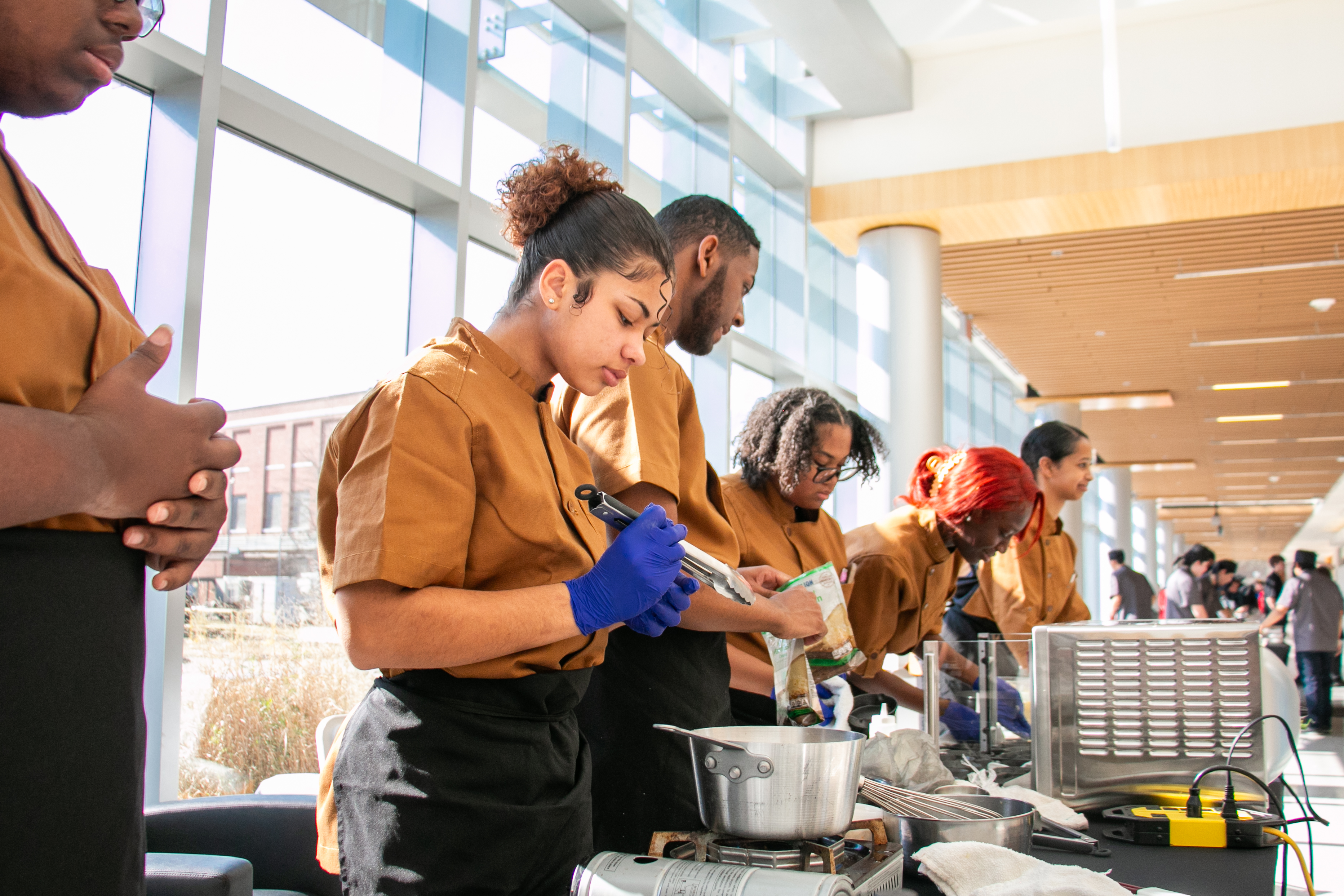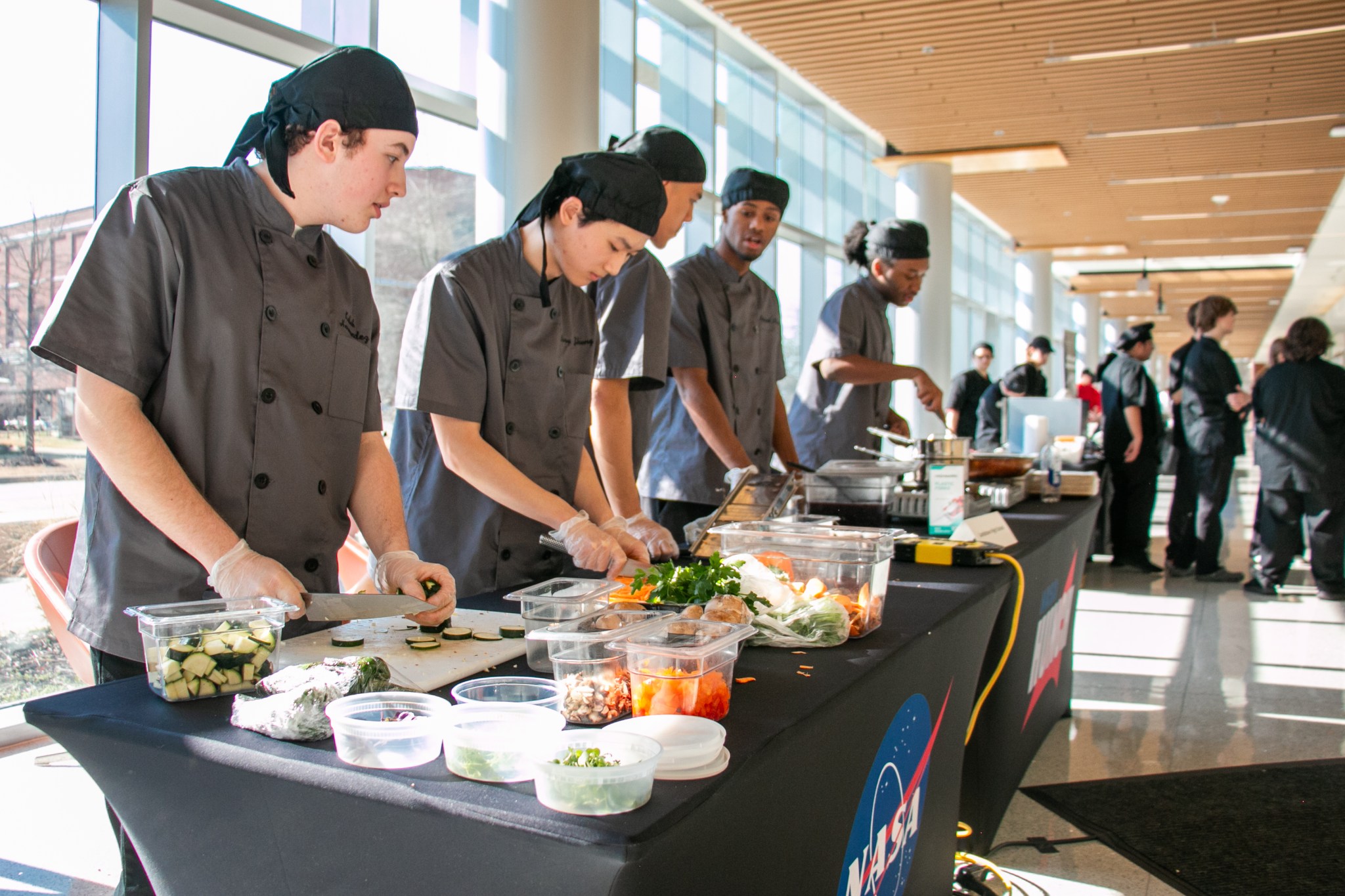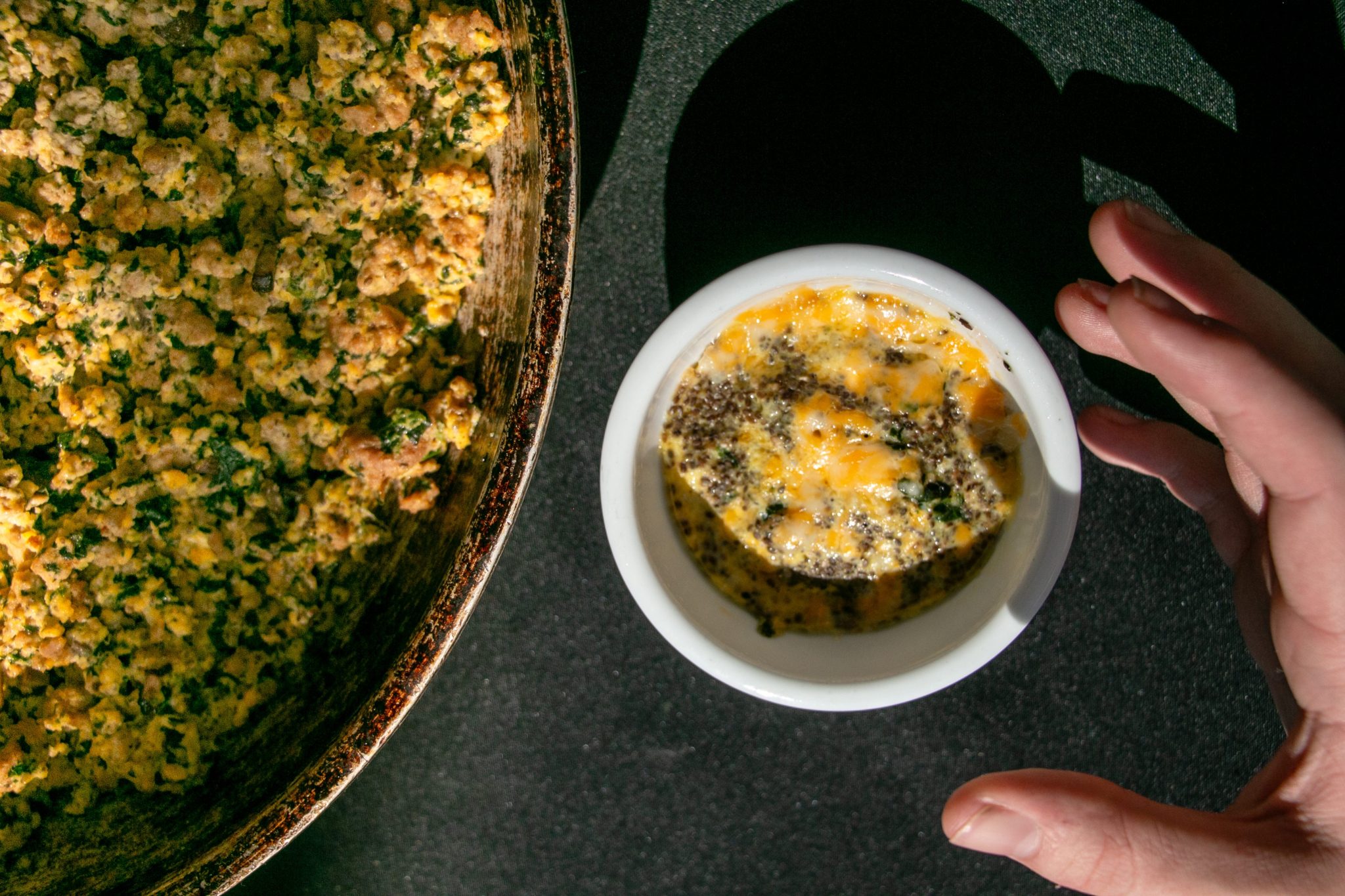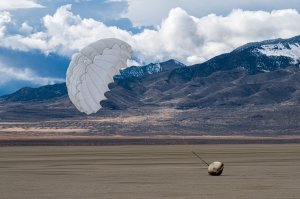Order Up: High School Students Compete to Launch Their Food into Space with NASA HUNCH Culinary Competition
On Monday, Feb. 26, visitors to the Integrated Engineering Services Building at NASA’s Langley Research Center in Hampton, Virginia, were greeted by the mouthwatering smell of roasted garlic, sautéed peppers and onions, fragrant herbs, and the unexpected discovery that the building’s main hallway had been turned into a pop-up kitchen for local high school students. […]

On Monday, Feb. 26, visitors to the Integrated Engineering Services Building at NASA’s Langley Research Center in Hampton, Virginia, were greeted by the mouthwatering smell of roasted garlic, sautéed peppers and onions, fragrant herbs, and the unexpected discovery that the building’s main hallway had been turned into a pop-up kitchen for local high school students.
These students were participants in NASA HUNCH Culinary. NASA HUNCH (High School Students United with NASA to Create Hardware) is a Project Based Learning program where high school students participate in the design and fabrication of real world valued products for NASA. HUNCH has six areas of focus that students may choose to participate in: Precision Machining, Softgoods, Design and Prototype, Food Science, Communications, and Software.

The HUNCH Astronaut Culinary Program provides students the opportunity to create dishes for astronauts aboard the International Space Station. Students must create tasty recipes following a specific food processing procedure and meeting certain nutritional requirements. These dishes must meet the standards of the NASA Johnson Space Center Food Lab in Houston, Texas.
Through this program, students gain culinary experience as well as experience with research and presenting their work in a professional environment. Students spend weeks perfecting their recipes so that on competition day, they can recreate their dishes in person at various NASA centers across the country.
This year, HUNCH Culinary student teams were tasked with the challenge of creating a savory breakfast dish that included a vegetable. The recipes had to fall between 150 and 350 calories, contain less than 12 grams of fat and 250 milligrams of sodium, have at least one gram of fiber, and “must process well for spaceflight and for use in microgravity” among several other requirements.

Several students described challenges around creating a recipe under these guidelines. Nyland Clay, a student at Landstown High School in Virginia Beach, explained his team’s problem solving around the minimal sodium guideline.
“We were able to work around that by using different types of flavors in order to substitute for the extra sodium,” he said. “One of the ways we did this was with poblano peppers. When seared over a grill, they make a nice smoky flavor that doesn’t add any sodium whatsoever.”
Nyland’s team additionally chose to use ground turkey in their sweet potato hash recipe instead of ground beef to avoid unnecessary fat.
Travis Walker, culinary instructor at Phoebus High School in Hampton and former executive catering chef manager for the NASA Langley Exchange, spoke highly of his students as his reason for teaching.
“The most rewarding part is just watching the growth of the kids,” he said. “From the day you get them and they can’t boil water, to the time they get here and they’re in these competitions and excelling — that’s the most rewarding part.”
The student groups with the highest scores will be invited to Johnson Space Center in Houston for a final competition where their dishes will be judged by Johnson Food Lab personnel, industry professionals, the ISS program office, and astronauts. The criteria are quality, taste, and the students’ work on the research paper and presentation video. The winning entree will be processed by the Johnson Space Center Food Lab and sent up to the station for the astronauts to enjoy.

























